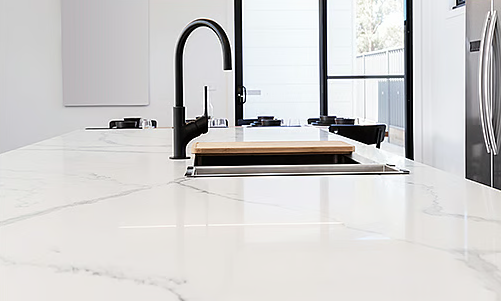Understanding the Essentials of Quartz Photography
Capturing the beauty of quartz countertops requires a blend of technical skill and creative vision. High-quality images can significantly enhance online and print marketing materials, attracting more customers and effectively showcasing the elegance of the stone. The ideal starting point is selecting the right equipment: a DSLR or mirrorless camera with a minimum resolution of 24 megapixels ensures sharp, detailed images. Using a macro lens, typically around 100mm, allows for close-ups that capture the intricate patterns and colors of quartz.
Setting the Stage for Stunning Shots
Lighting plays a pivotal role in quartz photography. Natural light is your best ally, providing a soft, diffused light that highlights the unique features of the quartz without creating harsh shadows. Position your quartz samples near large windows with indirect sunlight during the golden hours, which are shortly after sunrise or before sunset, to achieve the most flattering effects. Supplement with adjustable LED panels to fill in any shadows or enhance specific details of the stone.
Choose Your Angles Wisely
Experimenting with various angles brings out the quartz's best features. A 45-degree angle often proves effective for showing the depth and texture of the countertop while maintaining the context of its environment, like a kitchen or bathroom setting. Direct overhead shots are excellent for illustrating the uniformity and color consistency across the surface. Always ensure your camera settings are optimized for each shot, using a low ISO (around 100-200) to avoid graininess and a high aperture (f/8 or more) to keep the entire surface in sharp focus.
Enhance with Post-Production Techniques
Post-processing is essential to make your quartz images pop. Tools like Adobe Photoshop or Lightroom can enhance colors, contrast, and details to mirror the quartz's true beauty as seen in person. Adjusting the white balance can help correct any color casts caused by ambient lighting, ensuring the quartz’s natural colors are accurately represented. Clarity and vibrance sliders are particularly useful for emphasizing texture and depth.

Effective Use of Your Quartz Images
Once you have your collection of quartz images, using them effectively can make a significant difference in your marketing strategy. High-resolution photos are perfect for printed brochures or high-end publications, while slightly lower resolutions work for online platforms, ensuring faster loading times without compromising on quality. Incorporate your photos into dynamic online galleries or interactive features, allowing potential customers to see the versatile applications of quartz in various design settings.
Key Strategies for Maximum Impact
Utilize social media platforms to share your quartz photos, targeting design-focused groups and hashtags to reach a broader audience. Instagram and Pinterest are particularly effective for visual products like quartz countertops, where striking images can captivate potential buyers. Regular updates with fresh content can help maintain interest and engagement.
To learn more about maximizing the impact of your quartz photography, visit quartz max photos.
By following these tips, you can effectively showcase your quartz products through photography, capturing the attention of your target audience and boosting your sales. Remember, the key to successful quartz photography lies in attention to detail, from the shooting phase through to post-production and strategic use of the final images.
